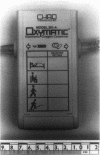Abstract
BACKGROUND: Provision of ambulatory oxygen using an intermittent pulsed flow regulated by a demand oxygen delivery system (DODS) greatly increases the limited supply time of standard portable gaseous cylinders. The efficacy of such a system has not previously been studied during submaximal exercise in subjects with severe chronic obstructive pulmonary disease (COPD) in whom desaturation is likely to be great and where usage is often most appropriate. METHODS: Fifteen subjects with severe COPD and oxygen desaturation underwent six minute walk tests performed in random order to compare the efficacy of a demand oxygen delivery system (DODS) with continuous flow oxygen. Walk distance, breathlessness, oxygen saturation, resting time, and recovery time (objective and subjective) were recorded and compared for each walk. RESULTS: Breathing continuous oxygen compared with baseline air breathing improved mean walk distance (295 m versus 271 m) and recovery time (47 seconds versus 112 seconds), whilst the lowest recorded saturation (81% versus 74%) and time desaturated below 90% (201 seconds versus 299 seconds) were reduced. When the DODS was compared with air breathing only the walk distance changed (283 m versus 271 m). A comparison of the DODS with continuous oxygen breathing showed the DODS to be less effective at oxygenating subjects with inferior lowest saturation (78% versus 81%), time spent below 90% (284 seconds versus 201 seconds), time to objective recovery (83 seconds versus 47 seconds), and walk distance (283 m versus 295 m). CONCLUSIONS: Neither of the delivery systems was able to prevent desaturation in these subjects. The use of continuous flow oxygen, however, was accompanied by improvements in oxygenation, walk distance, and recovery time compared with air breathing. The DODS produced only a small increase in walk distance without elevation of oxygen saturation, but was inferior to continuous flow oxygen in most of the measured variables when compared directly.
Full text
PDF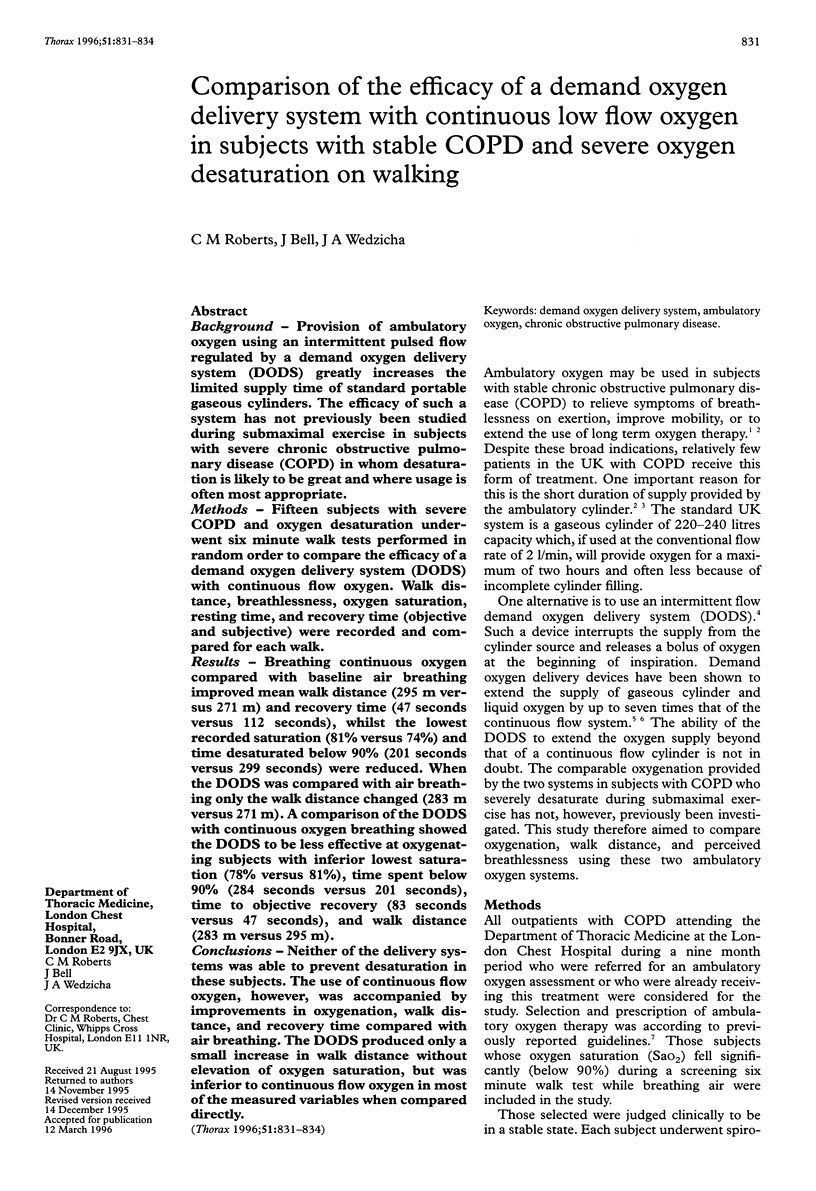
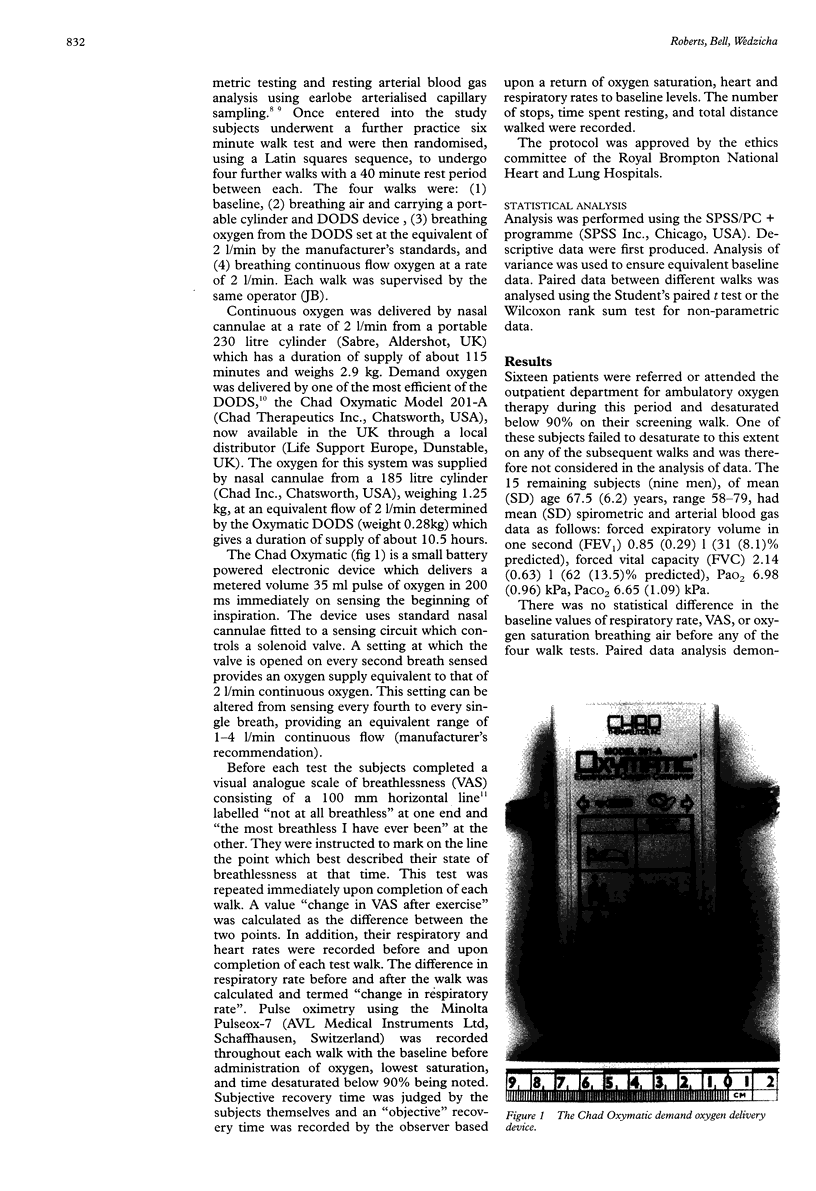
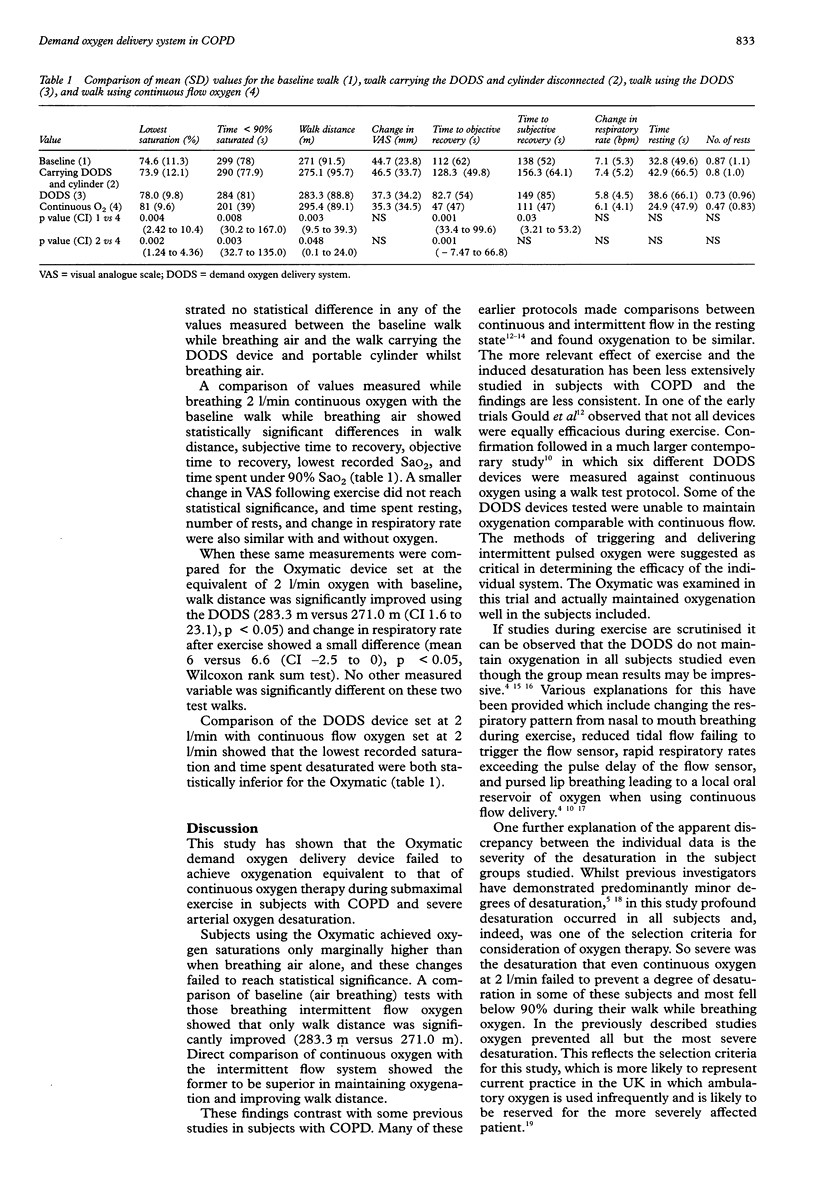
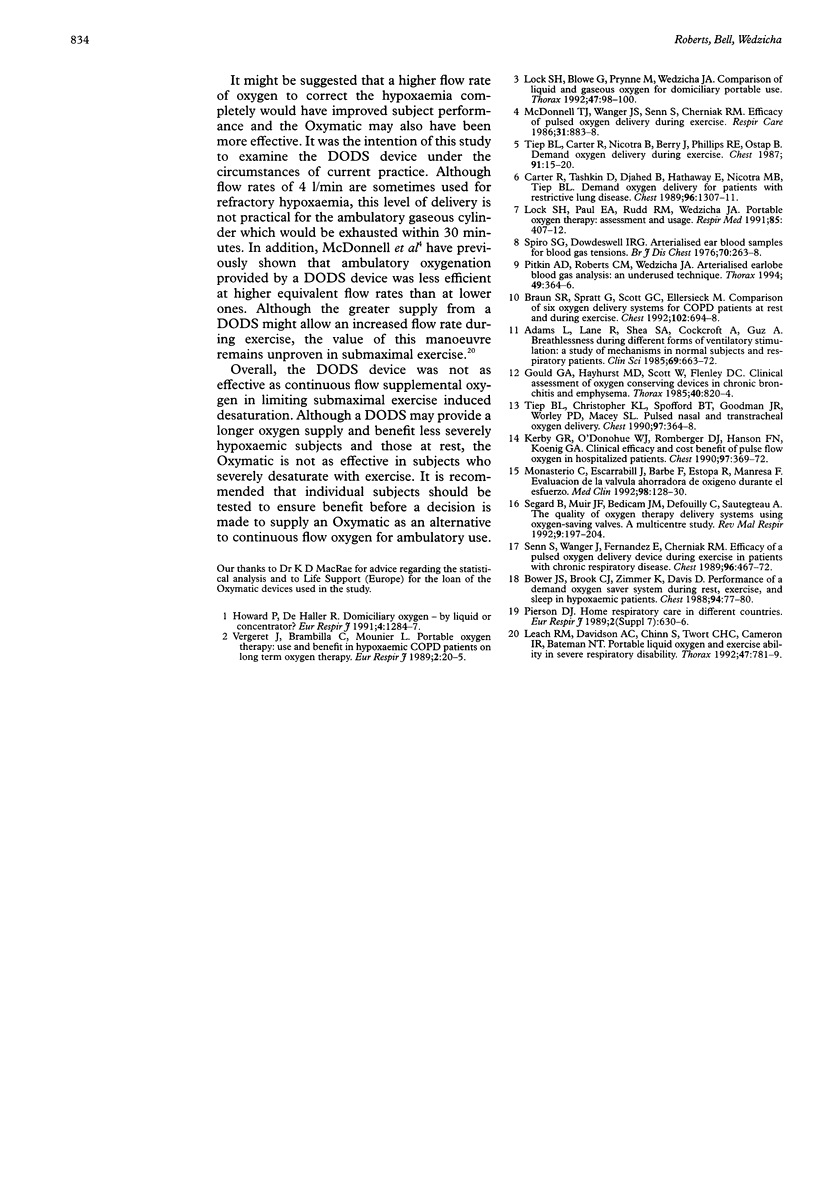
Images in this article
Selected References
These references are in PubMed. This may not be the complete list of references from this article.
- Adams L., Lane R., Shea S. A., Cockcroft A., Guz A. Breathlessness during different forms of ventilatory stimulation: a study of mechanisms in normal subjects and respiratory patients. Clin Sci (Lond) 1985 Dec;69(6):663–672. doi: 10.1042/cs0690663. [DOI] [PubMed] [Google Scholar]
- Bower J. S., Brook C. J., Zimmer K., Davis D. Performance of a demand oxygen saver system during rest, exercise, and sleep in hypoxemic patients. Chest. 1988 Jul;94(1):77–80. doi: 10.1378/chest.94.1.77. [DOI] [PubMed] [Google Scholar]
- Braun S. R., Spratt G., Scott G. C., Ellersieck M. Comparison of six oxygen delivery systems for COPD patients at rest and during exercise. Chest. 1992 Sep;102(3):694–698. doi: 10.1378/chest.102.3.694. [DOI] [PubMed] [Google Scholar]
- Carter R., Tashkin D., Djahed B., Hathaway E., Nicotra M. B., Tiep B. L. Demand oxygen delivery for patients with restrictive lung disease. Chest. 1989 Dec;96(6):1307–1311. doi: 10.1378/chest.96.6.1307. [DOI] [PubMed] [Google Scholar]
- Gould G. A., Hayhurst M. D., Scott W., Flenley D. C. Clinical assessment of oxygen conserving devices in chronic bronchitis and emphysema. Thorax. 1985 Nov;40(11):820–824. doi: 10.1136/thx.40.11.820. [DOI] [PMC free article] [PubMed] [Google Scholar]
- Howard P., de Haller R. Domiciliary oxygen--by liquid or concentrator? Working Group on Oxygen Therapy of IUATLD. Eur Respir J. 1991 Nov;4(10):1284–1287. [PubMed] [Google Scholar]
- Kerby G. R., O'Donohue W. J., Romberger D. J., Hanson F. N., Koenig G. A. Clinical efficacy and cost benefit of pulse flow oxygen in hospitalized patients. Chest. 1990 Feb;97(2):369–372. doi: 10.1378/chest.97.2.369. [DOI] [PubMed] [Google Scholar]
- Leach R. M., Davidson A. C., Chinn S., Twort C. H., Cameron I. R., Bateman N. T. Portable liquid oxygen and exercise ability in severe respiratory disability. Thorax. 1992 Oct;47(10):781–789. doi: 10.1136/thx.47.10.781. [DOI] [PMC free article] [PubMed] [Google Scholar]
- Lock S. H., Blower G., Prynne M., Wedzicha J. A. Comparison of liquid and gaseous oxygen for domiciliary portable use. Thorax. 1992 Feb;47(2):98–100. doi: 10.1136/thx.47.2.98. [DOI] [PMC free article] [PubMed] [Google Scholar]
- Lock S. H., Paul E. A., Rudd R. M., Wedzicha J. A. Portable oxygen therapy: assessment and usage. Respir Med. 1991 Sep;85(5):407–412. doi: 10.1016/s0954-6111(06)80186-1. [DOI] [PubMed] [Google Scholar]
- Monasterio C., Escarrabill J., Barbé F., Estopà R., Manresa F. Evaluación de la válvula ahorradora de oxígeno durante el esfuerzo. Med Clin (Barc) 1992 Feb 1;98(4):128–130. [PubMed] [Google Scholar]
- Pitkin A. D., Roberts C. M., Wedzicha J. A. Arterialised earlobe blood gas analysis: an underused technique. Thorax. 1994 Apr;49(4):364–366. doi: 10.1136/thx.49.4.364. [DOI] [PMC free article] [PubMed] [Google Scholar]
- Segard B., Muir J. F., Bédicam J. M., Defouilloy C., Sautegeau A. Qualité de l'oxygénothérapie délivrée avec les valves économiseuses d'oxygène. Une étude multicentrique. Commission médico-technique ANTADIR. Rev Mal Respir. 1992;9(2):197–204. [PubMed] [Google Scholar]
- Senn S., Wanger J., Fernandez E., Cherniack R. M. Efficacy of a pulsed oxygen delivery device during exercise in patients with chronic respiratory disease. Chest. 1989 Sep;96(3):467–472. doi: 10.1378/chest.96.3.467. [DOI] [PubMed] [Google Scholar]
- Spiro S. G., Dowdeswell I. R. Arterialized ear lobe blood samples for blood gas tensions. Br J Dis Chest. 1976 Oct;70(4):263–268. doi: 10.1016/0007-0971(76)90042-5. [DOI] [PubMed] [Google Scholar]
- Tiep B. L., Carter R., Nicotra B., Berry J., Phillips R. E., Otsap B. Demand oxygen delivery during exercise. Chest. 1987 Jan;91(1):15–20. doi: 10.1378/chest.91.1.15. [DOI] [PubMed] [Google Scholar]
- Tiep B. L., Christopher K. L., Spofford B. T., Goodman J. R., Worley P. D., Macy S. L. Pulsed nasal and transtracheal oxygen delivery. Chest. 1990 Feb;97(2):364–368. doi: 10.1378/chest.97.2.364. [DOI] [PubMed] [Google Scholar]



